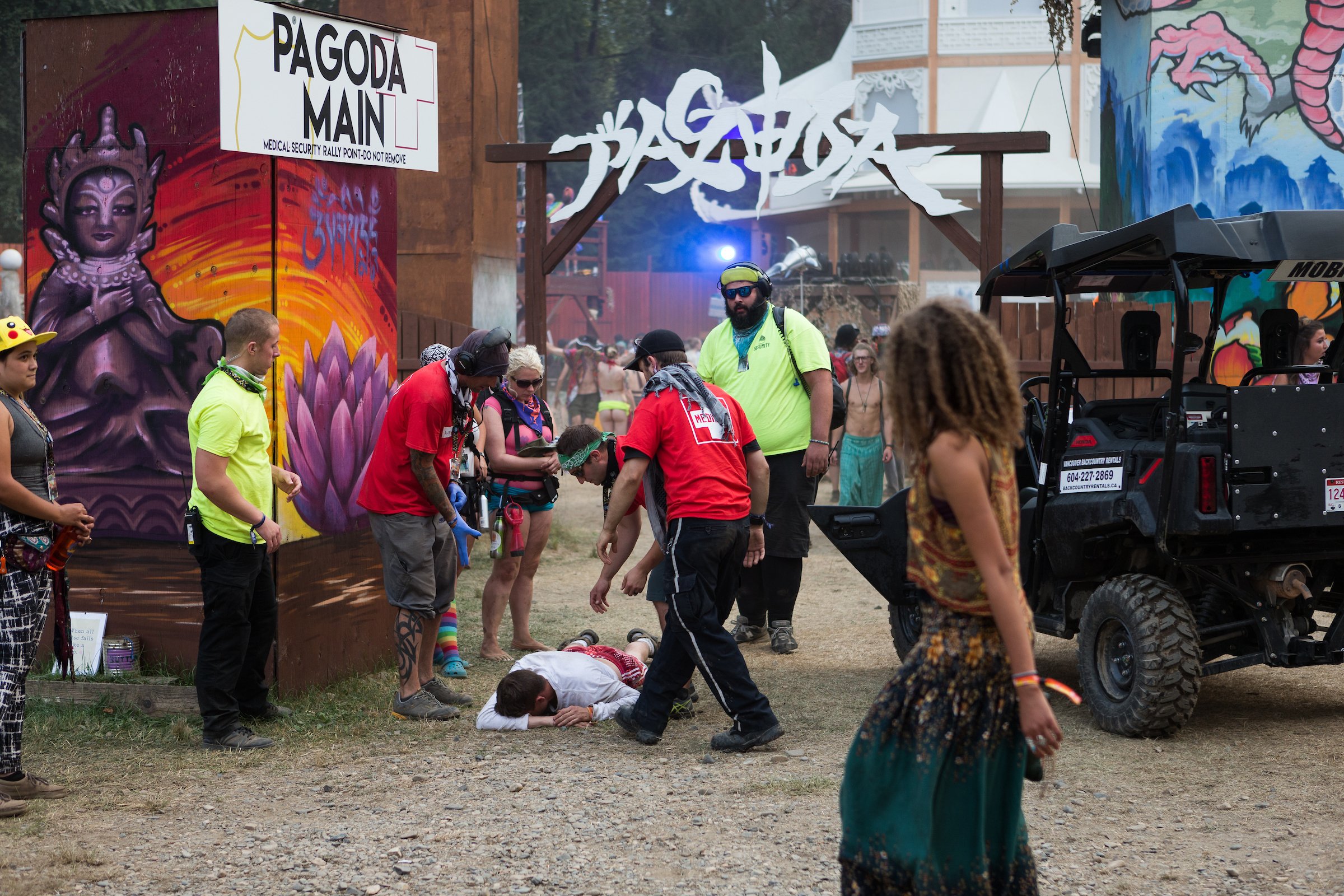
Substance Use Quick Hits
An approach to the substance use at music festivals
Authors: Drs. Chelsey Ju & Geordon Omand
Editors: Drs. Brendan Munn & Megan Singh
© Allen McEachern
Background
Music festivals (MFs) are popular events; a common feature in these spaces is the consumption of recreational substances. Polysubstance use in particular occurs at a much higher rate at MFs than at other events as well as in the general population, and can be a contributor to high risk behaviors and adverse health consequences. In addition to the tribalism, anonymity and acceptive alternative environment, MFs with confirmed medical personnel and harm reduction services offer attendees an altered risk evaluation of recreational use, potentially intensifying a sense of safety when trying new or more substances.
Intentional vs Unintentional Use
Intentional polysubstance use can be undertaken in order to prolong euphoria, to enhance a high, or to counterbalance particular substances and mitigate adverse effects and/or consequences of extended use over the event. Some literature points to broadly categorizing planned, intentional polysubstance users into phenotypic groups based on desired effect (eg stimulant, empathogenic or psychedelic focused). Experienced users and repeat MF attendees are more likely to engage in intentional polysubstance use.
Unintentional polysubstance use mainly occurs due to inexperienced users and/or contaminated drugs. Festival goers may be newly experimenting in this permissive and normalizing environment. Furthermore they may be accessing a new and/or different supply (increasing the risk of purposely or inadvertently adulterated substances), may be unable to access drug checking to confirm the contents of substances, may be re-dosing often (due to unawareness of basic harm reduction principles and their own limits, and/or experiencing collective or peer pressure), may be pre-loading (a common response to law enforcement presence at an event), or may be combining with alcohol or other high risk substances. Conversely, with many police and security measures, more harmful substance use behaviours (eg concealment, delayed medical presentations, or pre-loading as described above) may inadvertently be promoted, thereby decreasing proactive engagement with on-event services and impeding the minimization of potential harms. Experience shows that patients will exhibit a spectrum of reliability in their self-reported use that usually mirrors their perception of their expectation of acceptance for any substance use by the event and its services. Finally, environmental factors can also increase adverse risk associated with polysubstance use: i.e crowding, hot temperatures, dehydration, and long, consecutive event days with decreased sleep and limited access to medical care.
Adverse Effects
Severe adverse effects generally manifest as airway/respiratory distress (e.g. GHB, alcohol, opiates), hyperthermia/seizures (e.g. sympathomimetics, serotonergic agents), acute hyponatremia (e.g. MDMA), or cardiac toxicity (e.g. cocaine). In general, despite ongoing concern for fentanyl overdose due to adulteration of supply, opioids are rarely the cause of alterations of consciousness or mental status at MFs. Adverse effects can be avoided by the implementation of harm reduction strategies such as drug checking, education and engagement, but can also mitigated by providing timely medical care that addresses the appropriate broad toxidrome(s) present. At a MF, the goal is not always to discern exactly what substance(s) is/are responsible, but rather to identify and manage the contributing toxidrome based on clinical observations. The general approach to identifying toxidromes at MFs is listed in Figure 1. Results from this are to be referenced against the common clinical toxidromes detailed in Figure 2.
Figure 1. Focused Evaluation for Intoxicants and Toxidromes at MFs
Figure 2 : Common Clinical Toxidromes at Music Festivals
RESOURCES // REFERENCES
● Boileau-Falardeau M, Contreras G, Gariépy G, Laprise C. Patterns and motivations of polysubstance use: a rapid review of the qualitative evidence. Health Promot Chronic Dis Prev Can. 2022;42(2):47-59. https://doi.org/10.24095/hpcdp.42.2.01
● Fernández-Calderón F, Cleland CM, Palamar JJ. Polysubstance use profiles among electronic dance music party attendees in New York City and their relation to use of new psychoactive substances. Addict Behav. 2018 Mar;78:85-93. doi: 10.1016/j.addbeh.2017.11.004. Epub 2017 Nov 4. PMID: 29128711; PMCID: PMC5783759.
● Palamar JJ, Le A, Cleland CM, Keyes KM. Trends in drug use among nightclub and festival attendees in New York City, 2017-2022. Int J Drug Policy. 2023 May;115:104001. doi: 10.1016/j.drugpo.2023.104001. Epub 2023 Mar 17. PMID: 36934660; PMCID: PMC10164102.
● Palamar, J.J., Sönmez, İ. A qualitative investigation exploring why dance festivals are risky environments for drug use and potential adverse outcomes. Harm Reduct J 19, 12 (2022). https://doi.org/10.1186/s12954-022-00598-5
● Ponnet, K., Conradie, P., Van Havere, T., Hauspie, B., Khazaee-Pool, M., Pashaei, T., … Van Dyck, E. (2023). Exploring the Decision-Making Process behind Illicit Drug Use at Music Festivals. Substance Use & Misuse, 59(5), 707–715. https://doi.org/10.1080/10826084.2023.2294979
● Santamarina R, Caldicott D, Fitzgerald J, Schumann JL. Drug-related deaths at Australian music festivals. Int J Drug Policy. 2024 Jan;123:104274. doi: 10.1016/j.drugpo.2023.104274. Epub 2023 Dec 7. PMID: 38065009.

